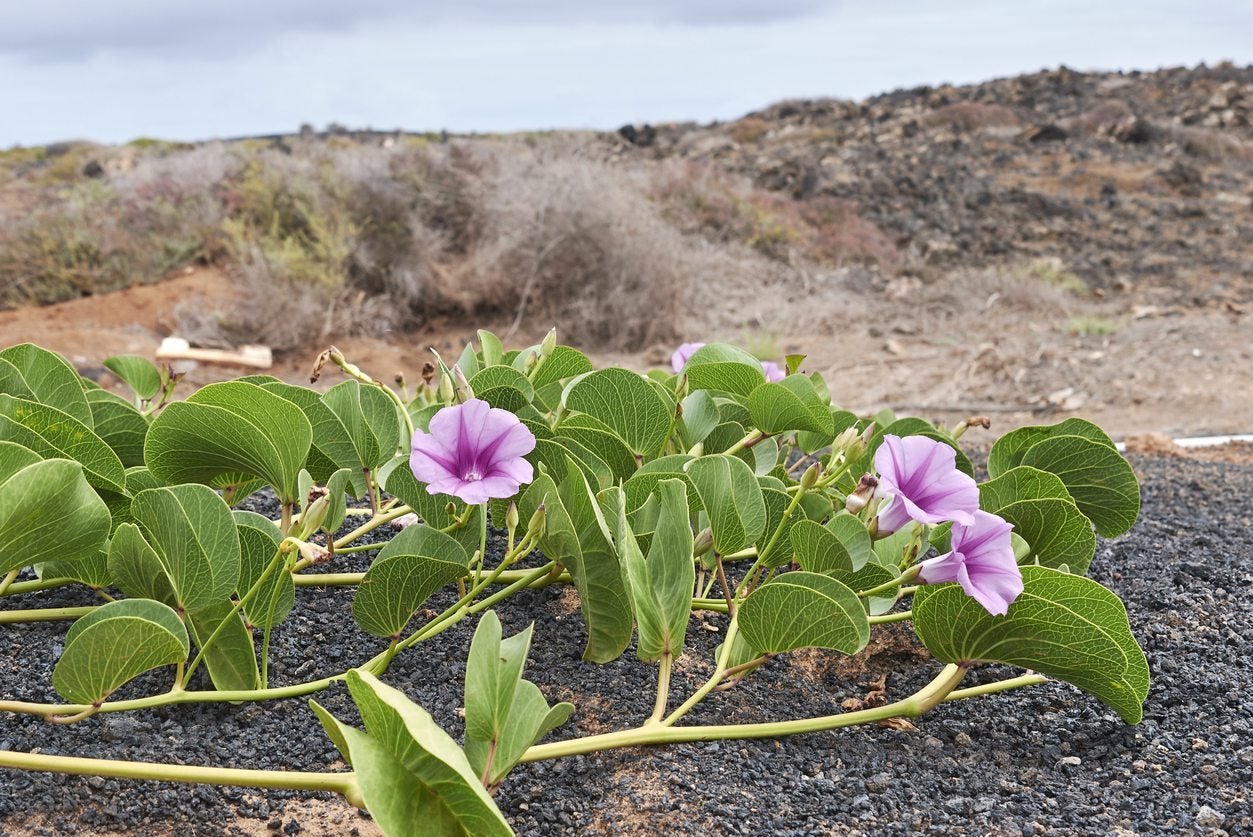What Is Beach Morning Glory: Growing Beach Morning Glories In Gardens


Ipomoea pes-caprae is a sprawling vine found on beaches from Texas across to Florida and up to Georgia. The flowers look similar to morning glory, hence the name beach morning glory, but the foliage is much different. It makes an excellent ground cover, with evergreen leaves and a quick-growing nature. What is beach morning glory? We'll delve into that question together along with some fun beach morning glory info.
What is Beach Morning Glory?
Beach morning glory is also called railroad vine due to its scrambling nature and ability to cover less used tracks and roadsides. It is adapted to coastal areas where sand is plentiful and the soil is well-draining. Salt, heat, and wind don't bother this plant and it is common to see it splayed across a dune in coastal regions. The large mats it forms help stabilize sand where it grows just above high tide. Beach morning glory can exceed 33 feet (10 m.) in length. It is native to coastal regions of North America and pan-tropical globally. In the U.S., it is hardy to zone 9 to 11. Leaves are 1 to 6 inches in length (2.5-15 cm.), double-lobed, thick, fleshy, and evergreen. The roots of this plant are often more than 3 feet (1 m.) into the sand. Flowers are funnel-shaped, darker at the corolla, and may be pink, reddish-purple, or dark violet. The perennial vine is just 16 inches high (40.5 cm.) but creates a tangled, low-growing thicket.
Beach Morning Glory Info
The tangled vines and deep taproot make growing beach morning glories perfect for stabilizing soil. Beach morning glories in gardens can perform as groundcovers. They are often seen tumbling in and over seawalls or along beach paths. Propagation is through seed or cuttings. Seeds do not need a dormant period but the seed coat must be scarified before germination, which occurs in every season but winter. These remarkable vines need little nutrition and have a high drought tolerance. To establish beach morning glories in gardens, take a cutting and set it into moistened sand. The internodes will shortly send out roots. Set them 3 feet (1 m.) apart and keep plants moist for the first few months.
Beach Morning Glory Care
Gardeners growing beach morning glories can breathe a sigh of relief. These plants are practically foolproof once established. The biggest problem will be their rapid growth rate and spread, but if you have a large area to cover, they are an excellent plant. Vines will scramble over other plants and need to be pruned away to prevent choking out other species. Overwatering should be avoided. Simply water regularly while the plant establishes and then leave it alone. Beach morning glories are even unpalatable to many animals due to high levels of bitter white sap. If you have the space, this is a fun native plant that will provide yearlong color and texture. NOTE: Before planting anything in your garden, it is always important to check if a plant is invasive in your particular area. Your local extension office can help with this.
Sign up for the Gardening Know How newsletter today and receive a free copy of our e-book "How to Grow Delicious Tomatoes".

Bonnie Grant is a professional landscaper with a Certification in Urban Gardening. She has been gardening and writing for 15 years. A former professional chef, she has a passion for edible landscaping.